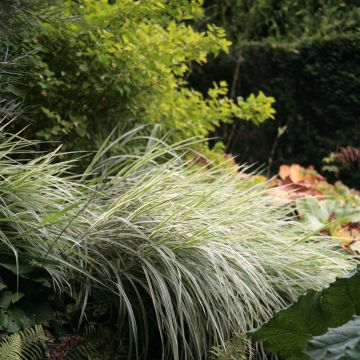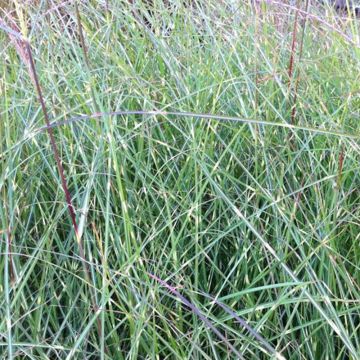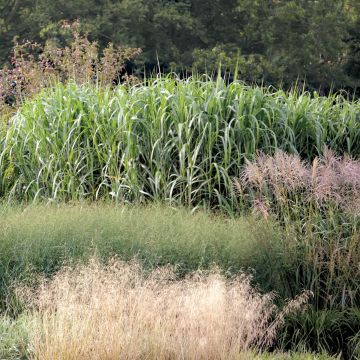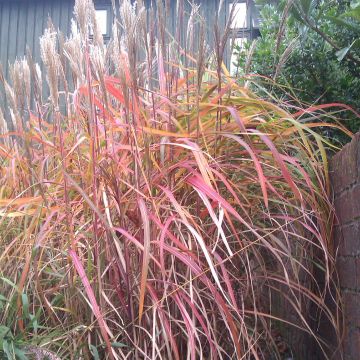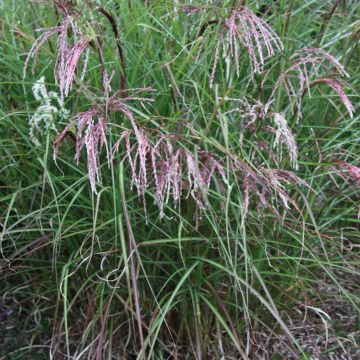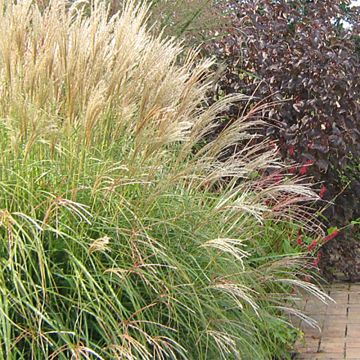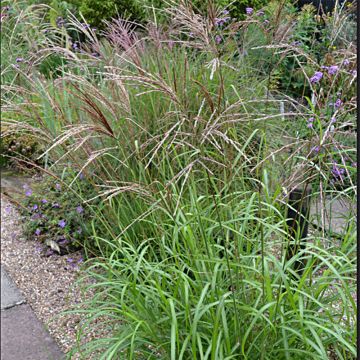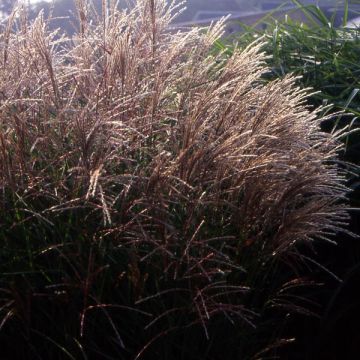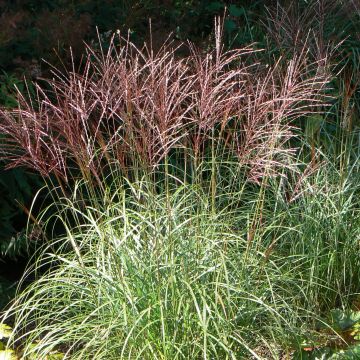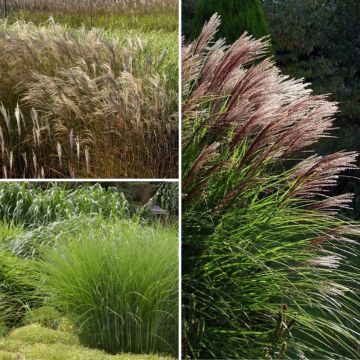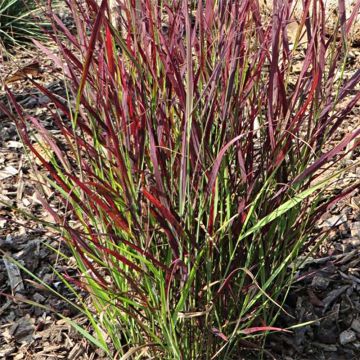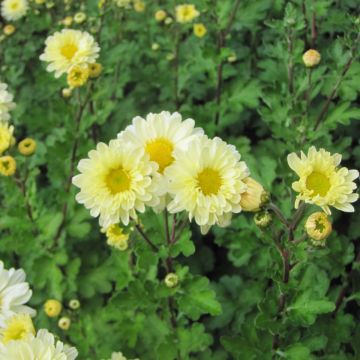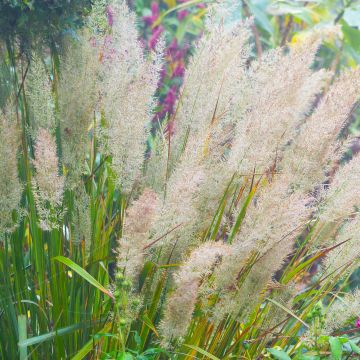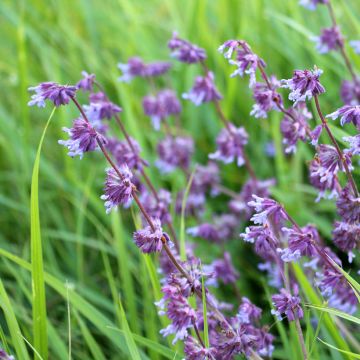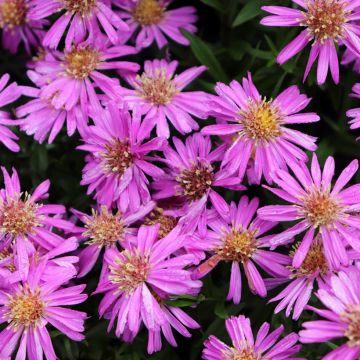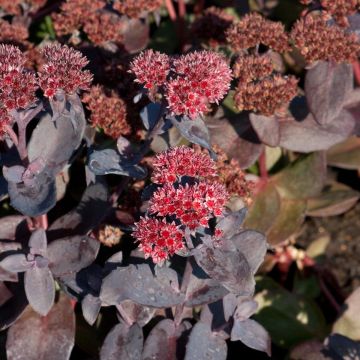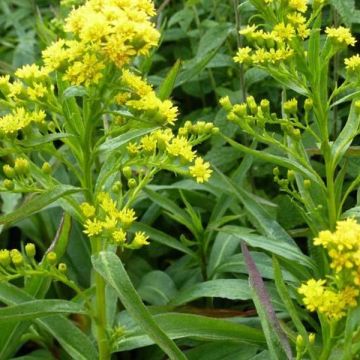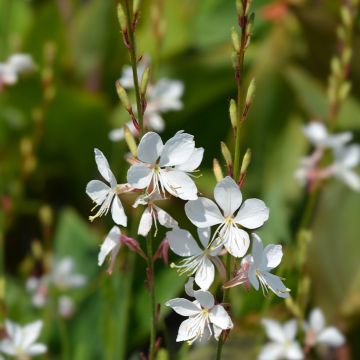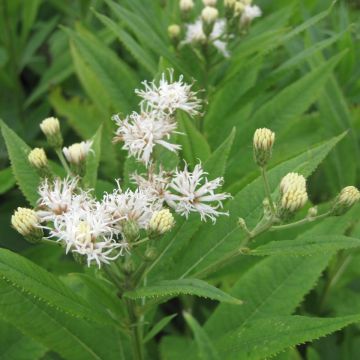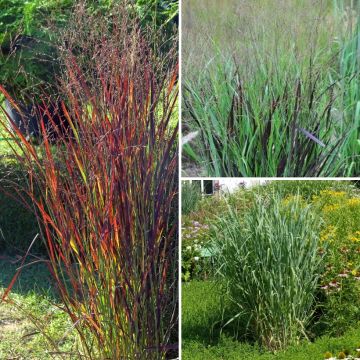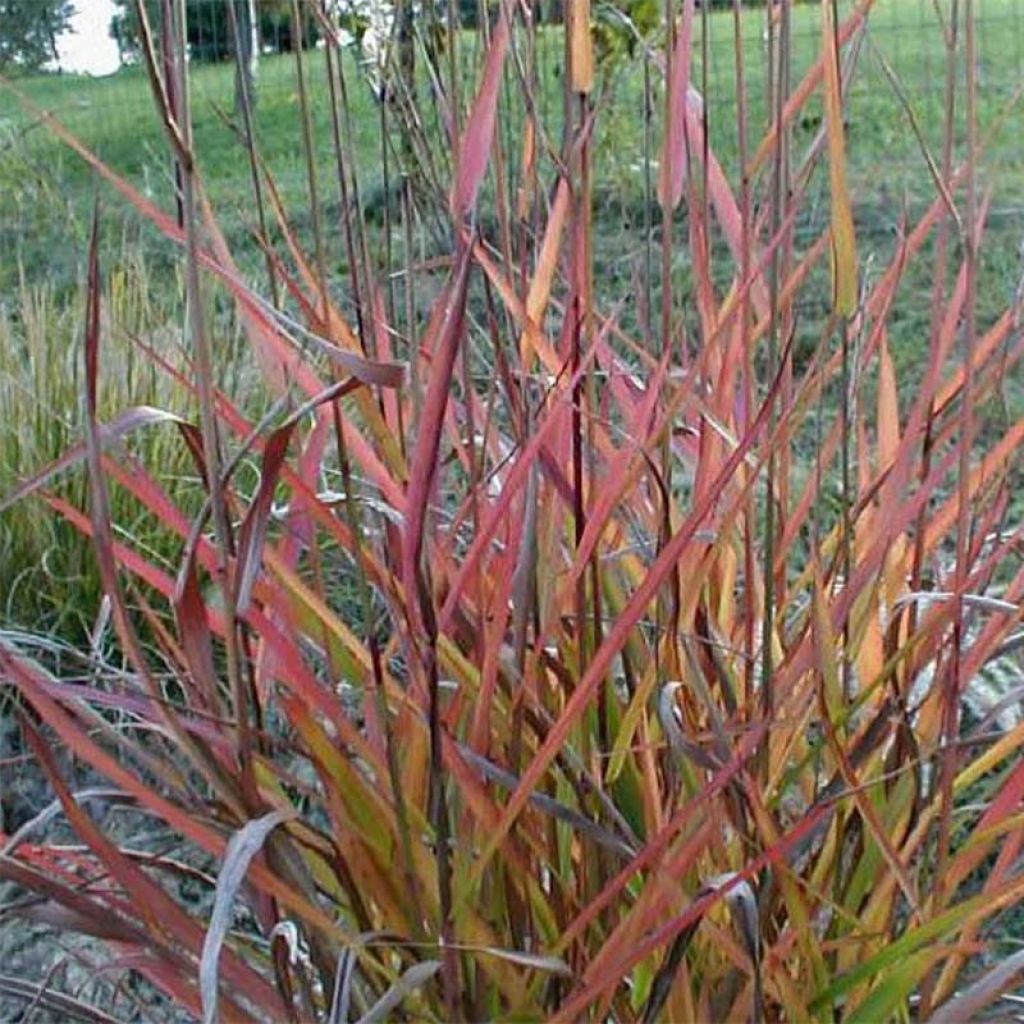

Miscanthus sinensis Purple Fall - Silvergrass
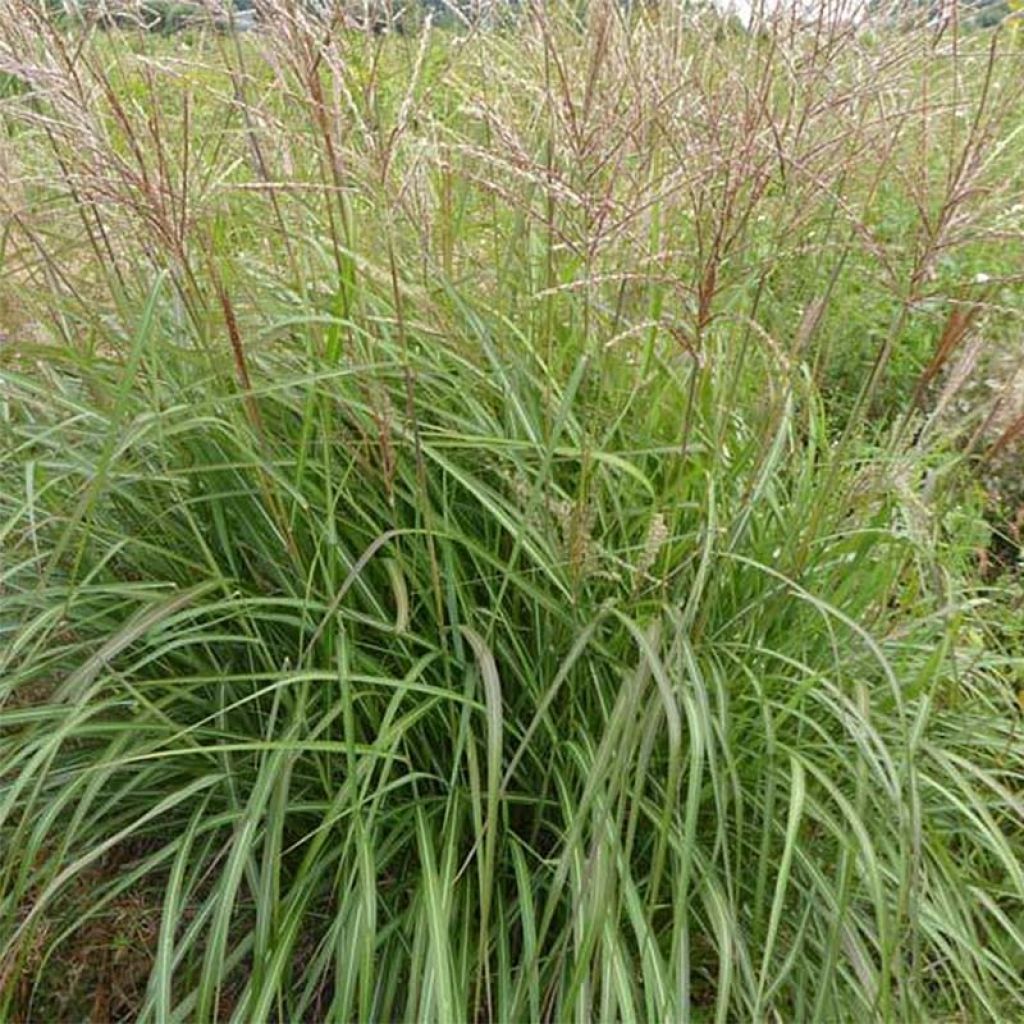

Miscanthus sinensis Purple Fall - Silvergrass
Miscanthus sinensis Purple Fall - Silvergrass
Miscanthus sinensis Purple Fall®
Eulalia, Porcupine Grass, Chinese silver Grass, Maiden Grass, Zebra Grass, Susuki Grass
Well, there's a first time for everything, I have become addicted to the promise of specific research area, so my garden has become a showcase for your company ????. But unfortunately, this naked miscanthus never shot, even though I put it in ideal conditions. Sad, but it had to happen one day.
Murielle, 24/05/2023
This item cannot be shipped to the selected country
Delivery charge from €5.90
More information
Schedule delivery date,
and select date in basket
This plant carries a 12 months recovery warranty
More information
We guarantee the quality of our plants for a full growing cycle, and will replace at our expense any plant that fails to recover under normal climatic and planting conditions.
From €5.90 for pickup delivery and €6.90 for home delivery
Express home delivery from €8.90.
Does this plant fit my garden?
Set up your Plantfit profile →
Description
Miscanthus sinensis 'Purple Fall’ is one of the most fantastic Chinese reeds selected in recent years. This variety of eulalia has a beautiful stature and is infinitely graceful. It looks quite ordinary in summer in its green livery, but it displays fabulous autumn colours of red, purple, and violet. While its foliage undergoes its metamorphosis, tall plume-like inflorescences emerge, changing from beige-pink to silver, in a harmony of colours. This hardy and easy-to-grow grass pays a beautiful tribute to the late season. Give it a prime location, in the sun, in the heart of a perennial bed or in a large container on a patio. Like most Chinese reeds, this variety requires soil that is sufficiently moist and loose to fully thrive.
'Purple Fall' belongs to the large Poaceae family. It is a horticultural form derived from Miscanthus sinensis, a hardy species native to East Asia and Oceania. This variety undoubtedly carries the genes of M. 'Purpurascens', famous for its foliage that turns red at the end of the season. This perennial grass with short rhizomes develops in non-spreading clumps. It is tufted and fast-growing, but never invasive. The plant reaches a height of about 1.8m (6ft) in flower, with a spread of 70 to 90cm (28 to 35in). The linear leaves are very thin, very long, flexible, and green with white veins. Gradually, starting in August, the base of the leaves begins to turn red. The shades of red, purple, violet, and wine steadily spread throughout the clump of leaves. Long floral stems emerge parallel to the foliage, from September to November, in the form of digitate and silky, upright spikes. They are reddish at first, quickly becoming beige-pink. As they fade, they take on a lovely silvery hue. The plumes consist of tiny flowers that close a little after opening, only to open again when mature. They then take on a paler and fluffier appearance and persist on the plant throughout winter. The deciduous foliage dries up and turns yellow in winter.
'Purple Fall' is hardy and remarkably colourful, making it an excellent alternative to Pennisetum 'Rubrum', which is acclaimed for its habit and dark foliage but is grown as an annual in our climates. It is a remarkably ornamental 'grass', which should be prominently placed in flower beds, at the turn of a path, or near the entrance of the garden. It is suitable for wild gardens and contemplative gardeners. Plant it among asters, roses, and daylilies. Watch it grow and thicken, play with the wind and the low autumn light, and bend under rain showers. It also has its place in modern gardens with clean lines, alongside dwarf bamboos or ferns if the soil is moist. In an urban garden, Miscanthus 'Purple Fall' will soften concrete structures. Growing it in large containers is also a great option, allowing you to furnish a patio or balcony with panache and elegance.
Report an error about the product description
Miscanthus sinensis Purple Fall - Silvergrass in pictures
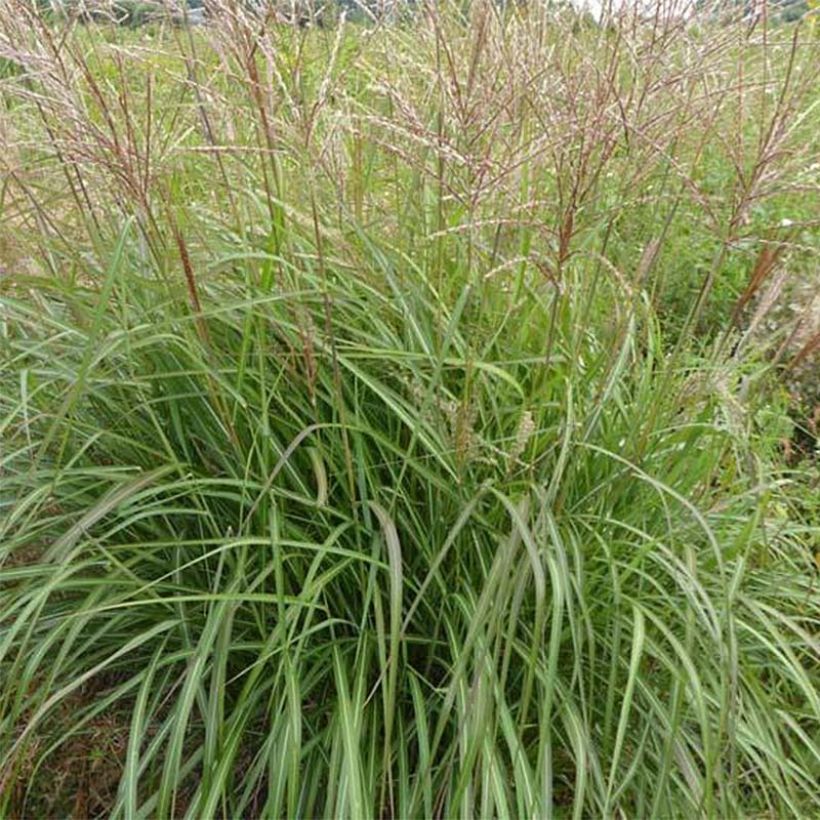

Flowering
Foliage
Plant habit
Botanical data
Miscanthus
sinensis
Purple Fall®
Poaceae
Eulalia, Porcupine Grass, Chinese silver Grass, Maiden Grass, Zebra Grass, Susuki Grass
Cultivar or hybrid
Other Miscanthus
Planting and care
Miscanthus sinensis 'Purple Fall' thrives in warm exposures and in healthy, fairly rich and deep, well-drained soil that remains slightly moist soil in summer. This plant can tolerate occasional drought if planted in deep soil. It can adapt to poor soil, but it will be less imposing and its growth will be slower. Cut back the foliage to ground level at the beginning of spring, after the strongest frosts have passed. For container planting, choose a large container (minimum 45L) filled with a fertile, well-draining, and flexible growing medium. A mixture composed of 20% good garden soil, 20% mixed draining elements (pumice or gravel or coarse river sand), and 60% horticultural compost is ideal. Apply well-decomposed compost once or twice a year (end of winter and autumn) or slow-release fertiliser. When it becomes less floriferous, divide the clump and collect the peripheral shoots to replant.
Planting period
Intended location
Care
-
, onOrder confirmed
Reply from on Promesse de fleurs
Late flowering perennials
Haven't found what you were looking for?
Hardiness is the lowest winter temperature a plant can endure without suffering serious damage or even dying. However, hardiness is affected by location (a sheltered area, such as a patio), protection (winter cover) and soil type (hardiness is improved by well-drained soil).

Photo Sharing Terms & Conditions
In order to encourage gardeners to interact and share their experiences, Promesse de fleurs offers various media enabling content to be uploaded onto its Site - in particular via the ‘Photo sharing’ module.
The User agrees to refrain from:
- Posting any content that is illegal, prejudicial, insulting, racist, inciteful to hatred, revisionist, contrary to public decency, that infringes on privacy or on the privacy rights of third parties, in particular the publicity rights of persons and goods, intellectual property rights, or the right to privacy.
- Submitting content on behalf of a third party;
- Impersonate the identity of a third party and/or publish any personal information about a third party;
In general, the User undertakes to refrain from any unethical behaviour.
All Content (in particular text, comments, files, images, photos, videos, creative works, etc.), which may be subject to property or intellectual property rights, image or other private rights, shall remain the property of the User, subject to the limited rights granted by the terms of the licence granted by Promesse de fleurs as stated below. Users are at liberty to publish or not to publish such Content on the Site, notably via the ‘Photo Sharing’ facility, and accept that this Content shall be made public and freely accessible, notably on the Internet.
Users further acknowledge, undertake to have ,and guarantee that they hold all necessary rights and permissions to publish such material on the Site, in particular with regard to the legislation in force pertaining to any privacy, property, intellectual property, image, or contractual rights, or rights of any other nature. By publishing such Content on the Site, Users acknowledge accepting full liability as publishers of the Content within the meaning of the law, and grant Promesse de fleurs, free of charge, an inclusive, worldwide licence for the said Content for the entire duration of its publication, including all reproduction, representation, up/downloading, displaying, performing, transmission, and storage rights.
Users also grant permission for their name to be linked to the Content and accept that this link may not always be made available.
By engaging in posting material, Users consent to their Content becoming automatically accessible on the Internet, in particular on other sites and/or blogs and/or web pages of the Promesse de fleurs site, including in particular social pages and the Promesse de fleurs catalogue.
Users may secure the removal of entrusted content free of charge by issuing a simple request via our contact form.
The flowering period indicated on our website applies to countries and regions located in USDA zone 8 (France, the United Kingdom, Ireland, the Netherlands, etc.)
It will vary according to where you live:
- In zones 9 to 10 (Italy, Spain, Greece, etc.), flowering will occur about 2 to 4 weeks earlier.
- In zones 6 to 7 (Germany, Poland, Slovenia, and lower mountainous regions), flowering will be delayed by 2 to 3 weeks.
- In zone 5 (Central Europe, Scandinavia), blooming will be delayed by 3 to 5 weeks.
In temperate climates, pruning of spring-flowering shrubs (forsythia, spireas, etc.) should be done just after flowering.
Pruning of summer-flowering shrubs (Indian Lilac, Perovskia, etc.) can be done in winter or spring.
In cold regions as well as with frost-sensitive plants, avoid pruning too early when severe frosts may still occur.
The planting period indicated on our website applies to countries and regions located in USDA zone 8 (France, United Kingdom, Ireland, Netherlands).
It will vary according to where you live:
- In Mediterranean zones (Marseille, Madrid, Milan, etc.), autumn and winter are the best planting periods.
- In continental zones (Strasbourg, Munich, Vienna, etc.), delay planting by 2 to 3 weeks in spring and bring it forward by 2 to 4 weeks in autumn.
- In mountainous regions (the Alps, Pyrenees, Carpathians, etc.), it is best to plant in late spring (May-June) or late summer (August-September).
The harvesting period indicated on our website applies to countries and regions in USDA zone 8 (France, England, Ireland, the Netherlands).
In colder areas (Scandinavia, Poland, Austria...) fruit and vegetable harvests are likely to be delayed by 3-4 weeks.
In warmer areas (Italy, Spain, Greece, etc.), harvesting will probably take place earlier, depending on weather conditions.
The sowing periods indicated on our website apply to countries and regions within USDA Zone 8 (France, UK, Ireland, Netherlands).
In colder areas (Scandinavia, Poland, Austria...), delay any outdoor sowing by 3-4 weeks, or sow under glass.
In warmer climes (Italy, Spain, Greece, etc.), bring outdoor sowing forward by a few weeks.

































